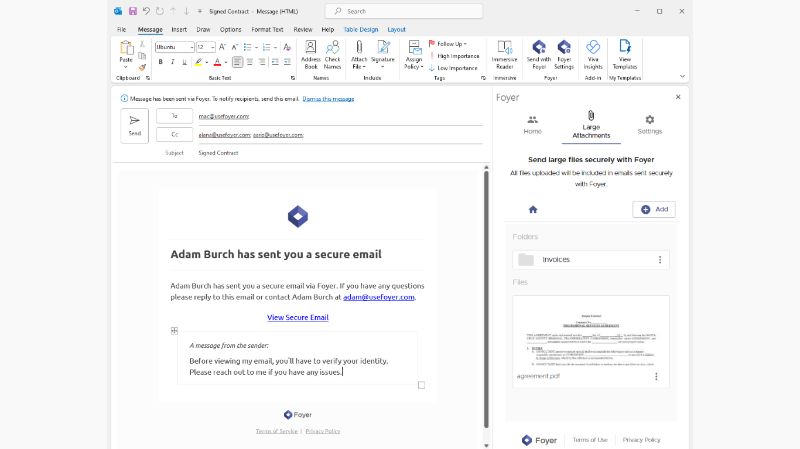Top 3 Methods of Encryption for Secure Email (Pros and Cons)


Secure email for small businesses is the protection of email data to prevent leaking of sensitive information with proper access controls and attack protection. Secure email in general can span many different types of security capabilities and in this blog we are going to focus specifically on the methods of encryption for securing email.
What are the ways to secure email for businesses
While we are going to focus on the ways to encrypt email, let's first take note of all the ways to protect email below.
- Phishing protection
- Anti-Spam
- Classification of Email Data
- URL threat based defense
- Protection over Transport Layer Security (TLS)
- Email encryption with Push Method
- Email encryption with Pull Method
Types of ways to encrypt email data for businesses
Email encryption is essential for protecting the confidentiality and integrity of email communication. The push and pull methods focus on end-to-end encryption, securing the email content from sender to recipient. TLS, on the other hand, focuses on securing the communication channel between email servers during transmission. Combining methods, such as using TLS for transport encryption and end-to-end encryption for email content, provides a more comprehensive approach to securing email communication. Let's compare the push method, the pull method, and the use of Transport Layer Security (TLS) in securing email communication:
Push Method
In the Push Method, the sender encrypts the email before sending it to the recipient, the encrypted email is pushed directly to the recipient's email server, and the recipient's email client or server decrypts the email using the appropriate decryption key.
Pros
- Direct and efficient communication between the sender and recipient.
- Sender has more control over the encryption process.
Cons
- Requires the recipient to have a compatible email client or server that supports the same encryption method.
Pull Method
In the Pull Method, the sender uploads the encrypted email to a secure server, the recipient's email client or server pulls the encrypted email from the server and the recipient's email client or server decrypts the email using the appropriate decryption key.
Pros
- Centralized storage of encrypted emails on a secure server.
- Recipient does not need to be online at the time of sending; they can retrieve the email later.
Cons
- Requires a secure server infrastructure.
- Potential delays if the recipient does not check for emails regularly.
TLS (Transport Layer Security)
TLS is a protocol that encrypts the communication between email servers during the transmission of emails. It provides point-to-point encryption between the sender's and recipient's email servers. TLS is normally included by default in all secure email services.
Pros
- Transparent to end users; they don't need to take any specific actions.
- Provides encryption in transit, protecting emails as they travel between servers.
Cons
- May not encrypt emails at rest as it's stored on the servers or on the client.
- Relies on the support and proper configuration of both the sender's and recipient's email servers.
Who are the best email providers of secure email for businesses
Utilizing Microsoft’s Outlook or Google’s Gmail through their small business subscriptions gives small businesses the best start to a journey of securing their email. Out of the box, organizations can get advanced secure email features like phishing protection, anti-spam, URL threat defense, and protection of email data over TLS. Then, as your business grows, your organization can take advantage of higher tiers of email security features that both Google and Microsoft provide.
What are the shortcomings of the small business plans that Google’s Gmail and Microsoft’s Outlook provide
The biggest issues stem from their pricing tiers that restrict small businesses from getting the best features to protect their email. For Google Gmail and Microsoft Outlook, organizations at least get spam and phishing protection as well as TLS, but are missing some of the key features such as URL threat based defense, end to end email encryption, and ability to attach large file sizes to emails.
Email Security and Large File Attachment
The first step to increasing your security and usability out of the box business plans is to have better security of your email data while also increasing the file size attachment limit for these providers. Foyer's Secure Email Microsoft Outlook Add-In is a great way to do just that.


